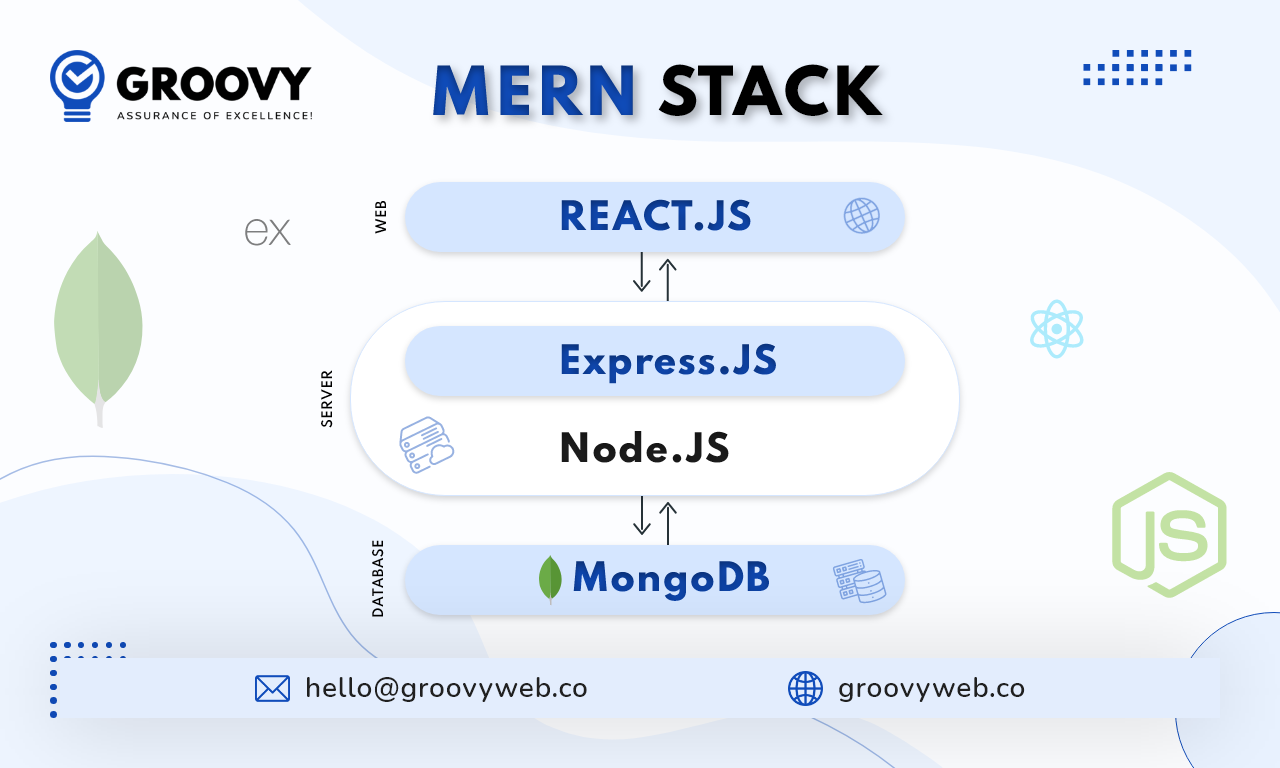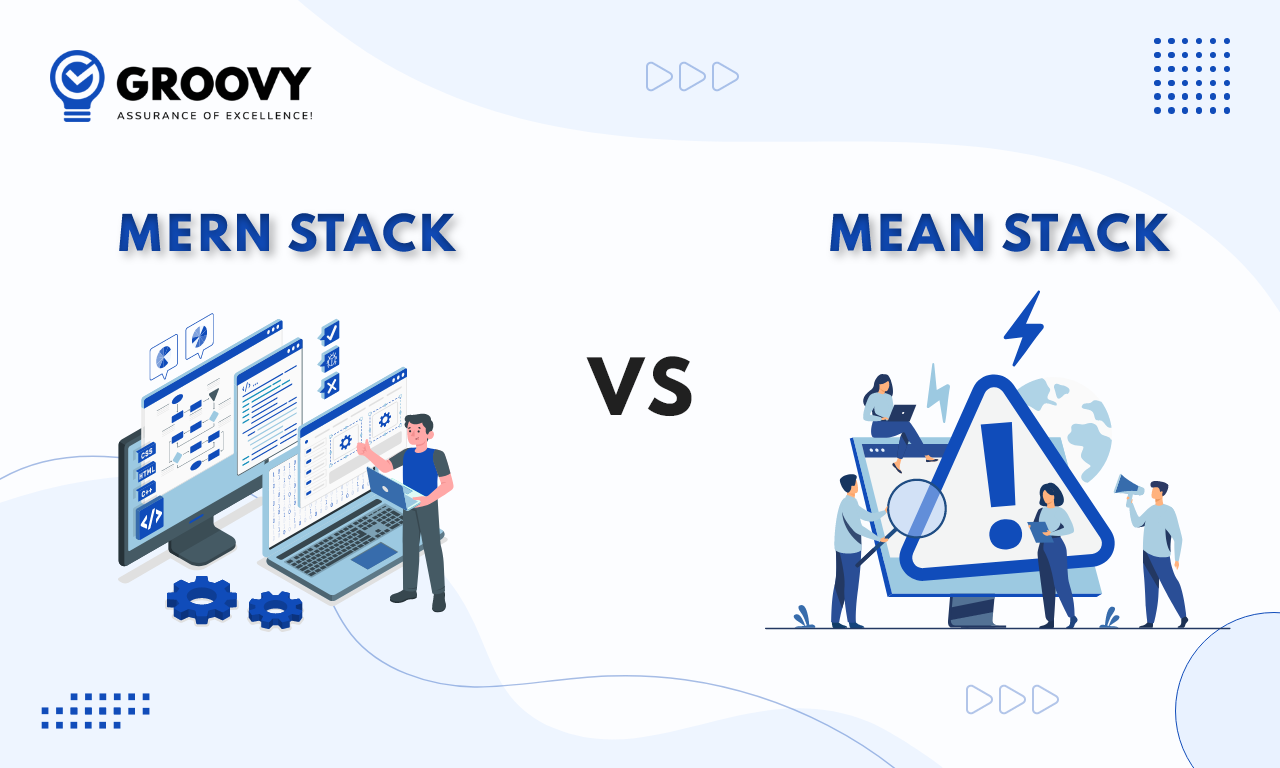Why MERN Stack is the Best Choice for Scalable Web Applications
Ashok Sachdev
April 03, 2025 42 Views
Quick Summary : MERN Stack development is an excellent preference for building scalable net programs because of its sturdy, JavaScript-based technologies. With MongoDB’s bendy NoSQL database, Express.Js managing the backend, React.Js ensuring efficient frontend development, and Node.Js supplying high-overall-performance server-aspect talents, the stack allows seamless integration across layers. MERN Stack is thought to have the potential to scale horizontally, cope with excessive visitor volumes, and maintain notable performance. Its thing-based totally architecture and real-time facts processing capabilities make it appropriate for dynamic, facts-pushed applications. Additionally, MERN enables faster development cycles and stepped forward user studies, making it the move-to solution for agencies searching out scalable, fee-effective, and excessive-performance web applications.
The demand for scalable web applications is developing swiftly, with companies searching for efficient solutions to handle growing numbers of visitors and data loads. MERN stack development has emerged as a top option due to its spontaneous integration of technologies, high performance and full-stack JavaScript capabilities. Compared to MongoDB, express.js, react.js, and node.js, Mern Stack provides a strong structure for building modern applications that require scalability, flexibility and efficiency.
What is the MERN Stack?
MERN Stack app development includes four key technologies: MongoDB, Express.Js, React.Js, and Node.Js. Each of those plays a vital position in the creation of dynamic web programs.
- MongoDB: A NoSQL database shops records in a bendy, JSON-like format. It is highly scalable, which makes it perfect for large-scale programs.
- Node. Js: A lightweight framework for building web programs and APIs. It simplifies coping with routes and requests in a Node.Js environment.
- Js: A front-end library that allows the creation of interactive and dynamic user interfaces. It enables the building of fast and efficient single-page applications.
- Js: A JavaScript runtime that enables you to run JavaScript code on the server side. Node.Js is speedy and efficient, making it best for handling concurrent requests in a scalable way.
MERN Stack Development: A Full-Stack JavaScript Solution
One of the standout capabilities of MERN stack development is that it uses JavaScript for each front-end and back-end of the application. This “Full-stack JavaScript” approach simplifies development by allowing developers to paint with a single programming language throughout development.
Using JavaScript on both the client side (React.Js) and the server side (Node.Js) streamlines development. Developers can now recognise a unified technology stack without replacing different languages, making the development quicker and more efficient.

Key Benefits of MERN Stack for Scalable Web Applications
1. Horizontal and Vertical Scaling
Scalability is a major issue for web packages, and MERN Stack development provides both horizontal and vertical scaling alternatives:
- Horizontal Scaling: MongoDB helps with sharding, distributing databases throughout several servers and enhancing load distribution.
- Vertical Scaling: Node.Js can handle several simultaneous connections, making it less difficult to scale applications by including more resources.
The global web development market is projected to grow notably, with companies focusing on scalable and efficient tech stacks to hold up with digital growth.
2. Asynchronous and Non-Blocking Architecture
One of the biggest advantages of MERN Stack development is its non-blocking, event-driven architecture:
- Js uses an asynchronous event loop, permitting programs to handle thousands of requests without slowing down.
- Js simplifies handling requests, reducing response times and improving overall performance.
This makes MERN Stack perfect for excessive-site visitor applications like e-commerce platforms, SaaS merchandise, and social networking websites. A look at W3Techs exhibits that Node.Js is used by over 2% of all websites worldwide, showcasing its growing reputation in web development.
3. React.js: Building Dynamic User Interfaces for Scalable Applications
React.Js is an effective library used to build interactive user interfaces. It uses a factor-based architecture, which means you can break down your application into smaller, reusable portions. This modular technique is the most effective and easiest to keep; however, it improves scalability as your application grows.
Furthermore, React’s Virtual DOM allows efficient updates, ensuring the personal interface remains speedy and responsive, even with a large amount of dynamic content material. This is important for building scalable web applications, for which performance is important.
4. Speed and Efficiency of Express.js
Express.Js, the backend framework of the MERN stack, simplifies the procedure of coping with HTTP requests and building APIs. It reduces the boilerplate code required to create routes and manage server-side logic, speeding up the development process.
Express.Js is lightweight and speedy, vital for programs that want to address many concurrent requests without delays. It additionally integrates seamlessly with MongoDB, ensuring that the statistics layer of your application can scale along with the rest of the application.
MERN vs. MEAN: Which is Better for Scalability?
MERN and MEAN Stack both offer scalability, but their effectiveness depends on the project’s requirements. Thanks to React’s virtual DOM and component reusability, MERN excels in handling dynamic applications with high user interactions. MEAN is better suited for enterprise-level applications, providing structured development with Angular’s TypeScript-based framework. MERN is often preferred for rapid scaling in startups, while MEAN is ideal for large, enterprise-grade solutions with long-term maintainability
Why MERN Stack Is a Better Choice Compared to Other Tech Stacks
Performance and Flexibility
React.js, central to the MERN stack, emphasizes simplicity and component modularity. Its lightweight nature, paired with Express.js, streamlines the development process, particularly for smaller applications.
Learning Curve and Development Speed
React.js offers a more gradual learning curve compared to Angular, making the MERN Stack accessible to developers seeking rapid development cycles. This accessibility can lead to faster prototyping and deployment, especially for startups and projects with tight timelines.
Community and Ecosystem
Both stacks benefit from substantial community support. However, React’s growing popularity has led to a more extensive ecosystem of libraries and tools, providing developers with a broader range of resources and third-party integrations.
Full-stack JavaScript: One Language, One Stack
MERN stack development permits you to paint with JavaScript through the developers, from the front-end (React.Js) to the back-end(Node.Js). This reduces the need for developers to interchange languages and technology, which may cause quicker development cycles and fewer errors.
Moreover, using JavaScript for each client-side and server-side makes sharing code between the two ends of the application simpler. This leads to a more cohesive and maintainable codebase. Partnering with a Node.js app development company ensures expert guidance, optimized performance, and scalable solutions tailored to your business needs.
The Role of MongoDB in Scalability
One of the principal reasons MongoDB is often the go-to database for scalable web applications is its capacity to handle unstructured statistics and its local guide for horizontal scaling. MongoDB’s bendy schema allows developers to modify the database shape without disrupting the entire gadget, making it less difficult to scale because the utility grows.
MongoDB’s sharding function also permits the database to distribute data throughout a couple of servers, which helps manage massive datasets extra successfully.
Full-Stack JavaScript Advantage
Seamless Frontend and Backend Integration
A fundamental gain of MERN Stack development is its unified programming language:
- Developers can use JavaScript across the entire stack, lowering the learning\ curve and enhancing development performance.
- Code reusability between the front end and back end simplifies preservation and scalability.
According to Stack Overflow’s Developer Survey, JavaScript remains the most popular programming language, with over 65% of developers using it actively, further solidifying MERN Stack’s relevance.
MongoDB: A NoSQL Database Built for Scale
Flexible and Distributed Data Management
MongoDB plays a critical function in MERN Stack development, providing functions like:
- Sharding and Replication: Allows seamless distribution of information across a couple of servers, improving fault tolerance.
- Flexible Document Structure: Unlike SQL databases, MongoDB shops data in a JSON-like format, making it perfect for applications requiring dynamic and evolving schemas.
A report using DB-Engines highlights MongoDB as the most broadly adopted NoSQL database, demonstrating its effectiveness in handling big-scale web programs.
A report by DB-Engines highlights MongoDB as the most widely adopted NoSQL database, demonstrating its effectiveness in handling large-scale web applications.
Express.js: Optimizing Backend Performance
Lightweight and Efficient Server-Side Handling
Express.Js is the spine of the MERN Stack backend, ensuring:
- Minimal Overhead: A lightweight framework that enables fast request dealing with API development.
- Middleware Support: It easily integrates with authentication, logging, and caching mechanisms, enhancing safety and overall performance.
React.js: Frontend Performance at Scale
Component-Based UI and Virtual DOM
React.Js is desired in MERN Stack development due to its:
- Component-Based Architecture: This encourages reusability and faster rendering.
- Virtual DOM: Enhances UI/UX design performance by updating the vital components instead of reloading the web page.
According to BuiltWith, over 12 million websites use React.js, highlighting its widespread adoption.
Node.js: High-Performance Backend Processing
Event-Driven and Scalable
Node.Js is designed for scalability:
- Asynchronous Processing: Handles more than one request without blocking off execution.
- Single Programming Language: This ensures easy integration between the front end and back end.
A survey through Statista suggests Node.Js as one of the top backend technologies utilised by over 40% of developers worldwide.
Future Trends in MERN Stack Development
The MERN stack environment continues to develop and adapt to the swiftly changing web development landscape. As developers try to construct extra efficient, scalable, and maintainable applications, new technology and methodologies are incorporated into the stack to decorate its abilities. Here are a few key future tendencies in MERN stack development that developers and companies should keep aaneye on:
1. Serverless Architecture: Developers are leveraging serverless solutions like AWS Lambda and Firebase Functions with Node.js, reducing infrastructure management and improving scalability.
2. Microservices Adoption: Splitting applications into smaller, independent services allows for easier scaling, improving efficiency in handling large-scale web applications.
3. GraphQL Integration: Many applications are transitioning from REST APIs to GraphQL for flexible and optimized data fetching, particularly when using MongoDB.
4. Improved State Management: React’s ecosystem continues to evolve, with solutions like Recoil and Zustand gaining traction for managing complex application states efficiently.
5. Server-Side Rendering (SSR) and Static Site Generation (SSG): These are important trends for strengthening the performance and search engine marketing of the Merns. React.JS can present the front end on the server, which appreciates the utility’s initial loading time.
Conclusion
The MERN Stack development approach offers a scalable, excessive-performance solution for modern net packages. With its seamless integration of MongoDB, Express.Js, React.Js, and Node.Js, companies can efficiently deal with excessive site visitors, ensure rapid overall performance, and build flexible applications. Whether comparing MEAN vs MERN or searching for a complicated full-stack JavaScript framework, MERN remains the top choice for scalable applications in today’s digital panorama.
Written by: Ashok Sachdev
Ashok Sachdev is the Project Manager at Groovy Web who began his professional career as a programmer at the young age of 17. Ever since then he is actively growing, learning new things, and adapting to new roles and responsibilities at every step. Aside from being an app developer, he is highly admired for his project management skills by his clients.
Frequently Asked Questions
We hope these clear your doubts, but if you still have any questions, then feel free to write us on hello@groovyweb.coHow does Node.js contribute to the scalability of MERN applications?
Node.Js handles excessive volumes of concurrent requests efficaciously with its non-blockading I/O model, making it perfect for scalable web packages. It helps actual-time information processing and scale efficiently with minimum useful resource consumption. This occasion-pushed architecture allows MERN stack programs to handle accelerated traffic and offer seamless performance, which is important for developing companies.
How does MongoDB enhance scalability in the MERN Stack?
MongoDB is a NoSQL database that shops records in bendy, JSON-like files. This allows the database to scale horizontally, making it less complicated to address massive datasets. It presents automated sharding and replication, which ensures statistics availability and overall performance as the application grows. MongoDB’s capability to address unstructured facts also contributes to MERN package scalability.
What role does React.js play in building scalable applications with MERN?
React.Js allows building of highly interactive, scalable user interfaces using its component-based totally architecture. React efficaciously updates and renders the additives that change simplest, lowering useless renders and enhancing performance. This makes it easier to construct large-scale applications that need dynamic content, providing faster load times and a smoother consumer revel, which is essential for scalability.
Is MERN Stack suitable for handling high-traffic web applications?
Yes, MERN Stack is ideal for coping with excessive site visitors' web applications because of the combination of Node.Js' green dealing with concurrent connections and MongoDB's capacity to scale horizontally. React.Js’s digital DOM guarantees rapid updates, even as Express.Js streamlines the backend, permitting the stack to successfully manage increased site visitors and large-scale statistics without compromising overall performance.
Related Blog

Sagar Patel
MERN stack vs MEAN stack: Detailed Comparison
Web App Development 18 Mar 2025 12 min read
Rahul Motwani
Step by Step Guide to Build A React Native App
Mobile App Development 05 Mar 2025 29 min read
Rahul Motwani
How to Build an App Like Airbnb? Top 10 Apps Like Airbnb for Holidays
Mobile App Development 26 Feb 2025 14 min readSign up for the free Newsletter
For exclusive strategies not found on the blog
